ElevenLabs_2025-11-17T22_49_27_Gary Pratz_ivc_sp104_s21_sb64_v3.mp3
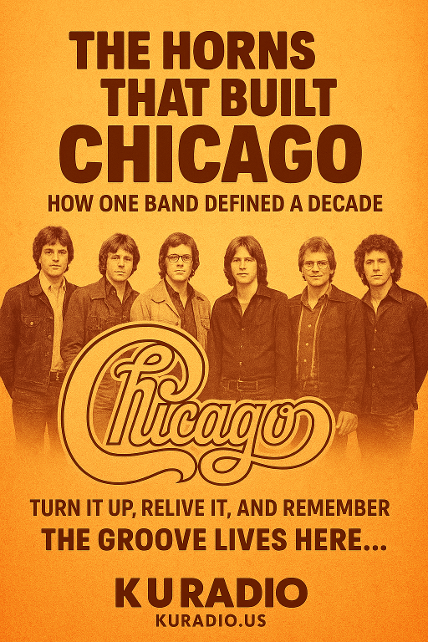
🎺 T
The Horns That Built Chicago:
How One Band Defined a Decade. Part of KU Radio’s “Songs That Shaped a Generation” Series.
When you think of the sound of the 1970s, it’s impossible not to hear the brass. And no band fused rock, jazz, and soul quite like Chicago. With their trademark horn section blasting like a city skyline at sunset, Chicago didn’t just play music — they built an entire sound that defined an era. Songs like “Saturday in the Park”, “25 or 6 to 4”, and the tender “Color My World”filled the airwaves with both power and poetry. At a time when most rock bands leaned on guitars, Chicago made horns the heartbeat — trumpet, trombone, and saxophone working together like gears in a clock.
The result? Music that was bold, emotional, and unmistakably theirs. And it wasn’t just the sound — it was the feeling. These were the songs of school dances, first loves, and summer nights that never seemed to end. So when a listener calls KU Radio to request “Color My World,” it’s not just a song. It’s a memory, softly unfolding like a letter from the past. 🎶
Turn it up, relive it, and remember — the groove lives here… on K U Radio.
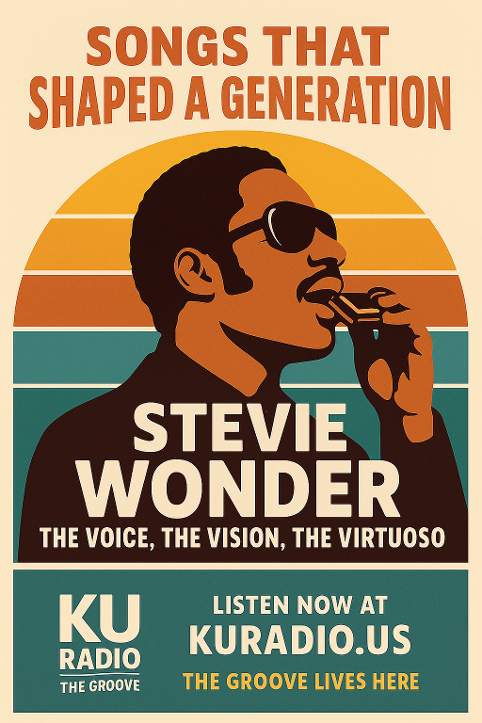
ElevenLabs_2025-11-17T22_59_28_Gary Pratz_ivc_sp104_s21_sb64_v3.mp3
🎹
Stevie Wonder: The Voice, the Vision, the Virtuoso
Part of KU Radio’s “Songs That Shaped a Generation” Series
When people think of the 1970s, one name stands tall among the legends — Stevie Wonder. With his boundless creativity, soulful voice, and fearless innovation, he didn’t just make hits; he shaped the sound of an era. 🎶
The Sound of Growth Stevie’s Motown beginnings were just the start. By the early ’70s, he broke free of the label’s creative limits and began producing groundbreaking albums like Music of My Mind (1972), Talking Book (1972), Innervisions (1973), and Songs in the Key of Life (1976). Each was a sonic experiment, blending funk, jazz, soul, and synthesizers into new forms of pop perfection.
💡 Landmark Songs That Defined a Decade “Superstition” (1972) – Funk perfection; that clavinet groove still drives dance floors today. “You Are the Sunshine of My Life” (1973) – Romantic, timeless, and pure joy. “Living for the City” (1973) – A sharp social statement wrapped in soul. “Sir Duke” (1977) – A joyful tribute to the legends who came before him.
🌍 Why Stevie Shaped the 70s Innovation: He transformed R&B with synthesizers and layered vocals. Meaning: His lyrics went beyond love to address real-life issues. Versatility: He bridged genres effortlessly. Legacy: His influence echoes through artists like Prince, Michael Jackson, and Alicia Keys.
❤️ Why It Still Matters For 70s listeners, Stevie’s music was more than just radio hits — it was the soundtrack of living. From first loves to family gatherings, his songs are woven into the fabric of everyday memories. At KU Radio, we keep playing them because they still speak. They still move us. They still shape us.
🎙️ From the KU Studio Brittany: “When ‘You Are the Sunshine of My Life’ plays, I still get goosebumps. Stevie had a way of making something so tender feel universal.”
Bob the Big Voice Man: “Stevie taught us that a melody can heal — that rhythm and heart can change the room.”
💭 Join the Conversation What’s your favorite Stevie Wonder song? Share your memory or a dedication at kuradio.us/contact — we might feature your story on air!
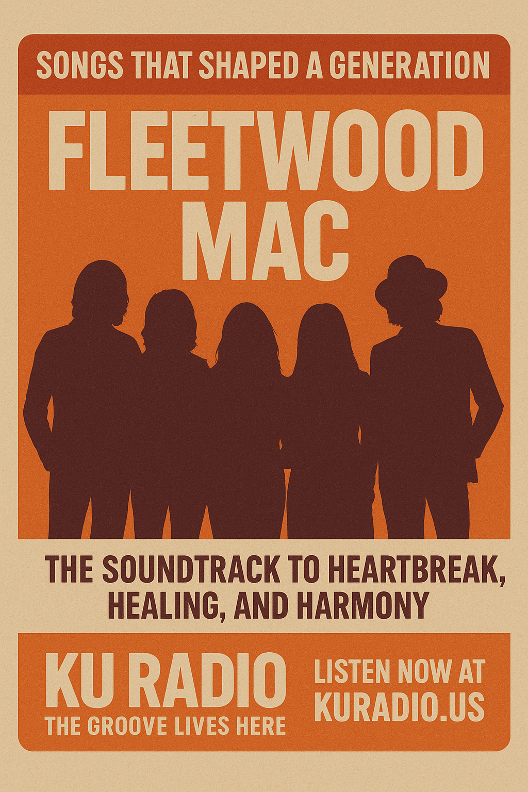
ElevenLabs_2025-11-18T16_05_15_Gary Pratz_ivc_sp104_s21_sb64_v3.mp3
🎸 Fleetwood Mac: The Soundtrack to Heartbreak, Healing, and Harmony
Part of KU Radio’s “Songs That Shaped a Generation” Series
When it comes to defining the sound of the 1970s, Fleetwood Mac stands as one of the most enduring and emotional forces in rock history. Their story is one of passion, pain, and creative brilliance — all of which came together to create some of the most unforgettable music of the decade.
💔 From Turmoil Came Timelessness By the mid-’70s, Fleetwood Mac had transformed from a British blues band into a California rock powerhouse. When Stevie Nicks and Lindsey Buckingham joined Mick Fleetwood, Christine McVie, and John McVie, the chemistry was instant — both musically and personally. The results? Fireworks, both onstage and off. Their landmark album Rumours (1977) was born out of heartbreak and chaos — band members breaking up, falling in and out of love, and pouring every emotion into the studio. The magic was in the mix: tension turned into art, and vulnerability became an anthem.
🎶 Songs That Defined an Era “Go Your Own Way” – Lindsey Buckingham’s fiery farewell to Stevie Nicks. Raw, defiant, and utterly catchy. “Dreams” – Stevie Nicks’ ethereal response, blending heartbreak with a haunting grace that still mesmerizes. “Don’t Stop” – Christine McVie’s hopeful ode to moving forward; a perfect reflection of the decade’s optimism. “The Chain” – The band’s only track credited to all five members — a song about unity and resilience that still gives chills.
🌈 Why They Shaped a Generation Fleetwood Mac’s music wasn’t just beautifully written — it was real. It captured the messy, emotional truth of love and life in the ’70s. At a time when rock was turning grand and glossy, Fleetwood Mac kept it human. Their harmonies were lush, their lyrics honest, and their sound — a mix of folk, pop, and rock — became the blueprint for emotional storytelling in music.
🕰️ The Legacy Lives On Decades later, Fleetwood Mac’s songs still connect with new listeners. From vinyl to streaming, their music remains a soundtrack for anyone who’s ever loved, lost, or learned to move on. When “Dreams” went viral on TikTok in 2020, a whole new generation discovered what we already knew — that great music never fades.
🎙️ On-Air Reflections Brittany:
“Fleetwood Mac taught us that even heartbreak can sound beautiful. Their songs remind us that life’s ups and downs are worth singing about.”
Bob the Big Voice Man: “Every time ‘The Chain’ kicks in, that bass line hits and — boom — you remember why this band defined the decade.”
💬 Share Your Memories What’s your favorite Fleetwood Mac song? Did “Dreams” soundtrack your first dance or “Go Your Own Way” play after a breakup?
Share your story at kuradio.us — we might feature your memory on-air during Songs That Shaped a Generation.
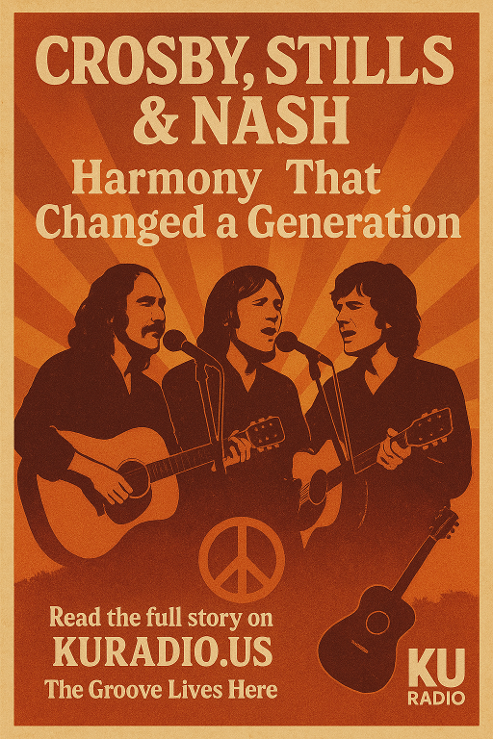
ElevenLabs_2025-11-18T16_33_39_Gary Pratz_ivc_sp104_s21_sb64_v3.mp3
🎸
Blog Post: “Harmony That Changed a Generation –
Part of KU Radio’s “Songs That Shaped a Generation” Series.
The Story of Crosby, Stills & Nash” By K U Radio | The Groove Lives Here.
When you think of perfect vocal harmony, timeless songwriting, and the sound of late-60s counterculture, one name rises above the rest —
Crosby, Stills & Nash. Formed in 1968, this powerhouse trio — David Crosby, Stephen Stills, and Graham Nash — came together after leaving legendary groups like The Byrds, Buffalo Springfield, and The Hollies. What started as an informal jam session in Joni Mitchell’s living room turned into one of the most influential supergroups in rock history.
Their debut album, Crosby, Stills & Nash (1969), was a near-instant classic. Songs like “Suite: Judy Blue Eyes”, “Marrakesh Express”, and “Helplessly Hoping” showcased their intricate harmonies and folk-rock warmth — the perfect soundtrack for a generation seeking peace and authenticity in a turbulent world.
🌿 The Sound of Peace and Protest Crosby, Stills & Nash weren’t just singers — they were voices for a movement. Their music captured the emotional highs and lows of the late 60s and early 70s, reflecting the era’s mix of rebellion, romance, and reflection.
When Neil Young joined in 1970, CSN became CSNY, adding even more firepower to their message with songs like “Ohio” — a chilling reaction to the Kent State tragedy.
🎶 Legacy of Harmony Over the decades, CSN remained a symbol of idealism and artistry. Their vocal blend influenced everyone from the Eagles to Fleet Foxes, and their songs continue to resonate with new generations of dreamers, activists, and lovers of genuine songwriting.
Whether you’re revisiting Déjà Vu or hearing “Teach Your Children” for the first time, Crosby, Stills & Nash remind us that harmony — both musical and human — is something worth striving for. 🎧 Listen now on K U Radio — where The Groove Lives Here.
🌿 Rock Facts: Crosby, Stills & Nash Edition
🎶 A Living Room Beginning: The band’s legendary harmonies first came together by accident in Joni Mitchell’s living room — just three guys singing for fun, until magic happened.
✨ Supergroup Origins: Each member came from a major band: Crosby from The Byrds, Stills from Buffalo Springfield, and Nash from The Hollies. No wonder they sounded otherworldly from the start.
🪶 Joni’s Touch: Their song “Our House” was inspired by the real home Joni Mitchell shared with Graham Nash in Laurel Canyon — complete with “two cats in the yard.”
🎤 No Drummer? No Problem. When they performed at Woodstock 1969, it was only their second-ever live performance. Talk about pressure!
☮️ Voices for a Generation: Their harmonies weren’t just pretty — they carried messages of peace, love, and protest. Songs like “Ohio” (with Neil Young) became soundtracks to the anti-war movement.
🎧 Neil Young Joins In: When Neil Young became the “Y” in CSNY, the group gained even more fire — and some famously fiery arguments.
🌴 Laurel Canyon Legends: Their home base in Laurel Canyon, California, became the heart of the folk-rock scene — where artists like Joni Mitchell, The Doors, and Carole King hung out and jammed.
💿 Harmony Forever: Even through breakups and reunions, their voices remained timeless. Their blend still gives chills — proof that true harmony never fades.
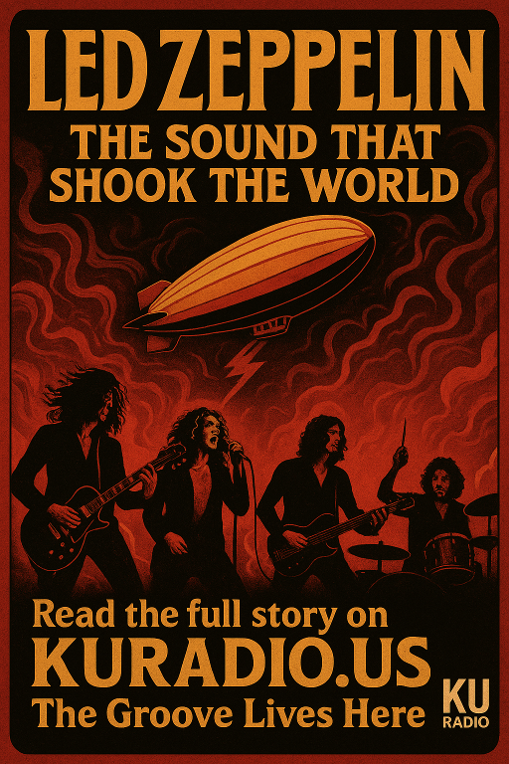
ElevenLabs_2025-11-18T16_45_24_Gary Pratz_ivc_sp104_s21_sb64_v3.mp3
⚡
Blog Post: “Harmony That Changed a Generation –
Part of KU Radio’s “Songs That Shaped a Generation” Series.
The Story of Crosby, Stills & Nash” By K U Radio | The Groove Lives Here.
When you think of perfect vocal harmony, timeless songwriting, and the sound of late-60s counterculture, one name rises above the rest —
Crosby, Stills & Nash. Formed in 1968, this powerhouse trio — David Crosby, Stephen Stills, and Graham Nash — came together after leaving legendary groups like The Byrds, Buffalo Springfield, and The Hollies. What started as an informal jam session in Joni Mitchell’s living room turned into one of the most influential supergroups in rock history.
Their debut album, Crosby, Stills & Nash (1969), was a near-instant classic. Songs like “Suite: Judy Blue Eyes”, “Marrakesh Express”, and “Helplessly Hoping” showcased their intricate harmonies and folk-rock warmth — the perfect soundtrack for a generation seeking peace and authenticity in a turbulent world.
🌿 The Sound of Peace and Protest Crosby, Stills & Nash weren’t just singers — they were voices for a movement. Their music captured the emotional highs and lows of the late 60s and early 70s, reflecting the era’s mix of rebellion, romance, and reflection.
When Neil Young joined in 1970, CSN became CSNY, adding even more firepower to their message with songs like “Ohio” — a chilling reaction to the Kent State tragedy.
🎶 Legacy of Harmony Over the decades, CSN remained a symbol of idealism and artistry. Their vocal blend influenced everyone from the Eagles to Fleet Foxes, and their songs continue to resonate with new generations of dreamers, activists, and lovers of genuine songwriting.
Whether you’re revisiting Déjà Vu or hearing “Teach Your Children” for the first time, Crosby, Stills & Nash remind us that harmony — both musical and human — is something worth striving for. 🎧 Listen now on K U Radio — where The Groove Lives Here.
🌿 Rock Facts: Crosby, Stills & Nash Edition
🎶 A Living Room Beginning: The band’s legendary harmonies first came together by accident in Joni Mitchell’s living room — just three guys singing for fun, until magic happened.
✨ Supergroup Origins: Each member came from a major band: Crosby from The Byrds, Stills from Buffalo Springfield, and Nash from The Hollies. No wonder they sounded otherworldly from the start.
🪶 Joni’s Touch: Their song “Our House” was inspired by the real home Joni Mitchell shared with Graham Nash in Laurel Canyon — complete with “two cats in the yard.”
🎤 No Drummer? No Problem. When they performed at Woodstock 1969, it was only their second-ever live performance. Talk about pressure!
☮️ Voices for a Generation: Their harmonies weren’t just pretty — they carried messages of peace, love, and protest. Songs like “Ohio” (with Neil Young) became soundtracks to the anti-war movement.
🎧 Neil Young Joins In: When Neil Young became the “Y” in CSNY, the group gained even more fire — and some famously fiery arguments.
🌴 Laurel Canyon Legends: Their home base in Laurel Canyon, California, became the heart of the folk-rock scene — where artists like Joni Mitchell, The Doors, and Carole King hung out and jammed.
💿 Harmony Forever: Even through breakups and reunions, their voices remained timeless. Their blend still gives chills — proof that true harmony never fades.
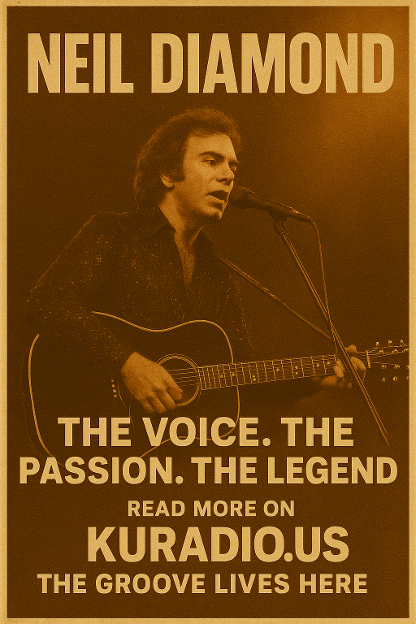
ElevenLabs_2025-11-18T17_03_27_Gary Pratz_ivc_sp104_s21_sb64_v3.mp3
Neil Diamond: The Voice, The Passion, The Legend By K U Radio – The Groove Lives,
Part of KU Radio’s “Songs That Shaped a Generation” Series.
Few artists can command a stage—or a song—the way Neil Diamond does. From the first shimmering notes of “Sweet Caroline” to the reflective beauty of “I Am... I Said,” his voice has become part of the American soundtrack.
Born in Brooklyn in 1941, Neil Leslie Diamond began his career as a songwriter in New York’s famous Brill Building, penning hits for other artists before realizing his words carried even more power when sung in his own unmistakable voice. His early hits like “Solitary Man” and “Cherry, Cherry” captured a youthful energy, blending pop with a little bit of soul and a touch of introspection—an irresistible combination that made him one of the most played artists of the ’60s and ’70s. But Neil’s magic was more than melody—it was emotion.
His live performances were legendary, filled with passion, sequined shirts, and that signature baritone that could make a stadium feel like a small café. When he belted out “Brother Love’s Traveling Salvation Show” or “Cracklin’ Rosie,” the audience didn’t just listen—they believed. And of course, there’s “Sweet Caroline.” Released in 1969, it became more than a song—it became a moment.
From Fenway Park singalongs to wedding receptions and bar nights everywhere, those three notes—“ba ba ba!”—are universal. Few tunes have carried such joyful endurance through generations.
In the decades since, Diamond’s catalog has continued to inspire artists across genres. His lyrics are honest, his delivery pure, and his legacy unmatched. Even after stepping away from touring, his music continues to connect hearts, reminding us all that great songs never fade—they just find new listeners. So tonight on K U Radio, when Neil Diamond comes on the air, take a moment to turn it up and sing along. Whether it’s “Song Sung Blue” or “America,” remember that voice still shines as bright as ever.
Because here at K U Radio... The Groove Lives Here.
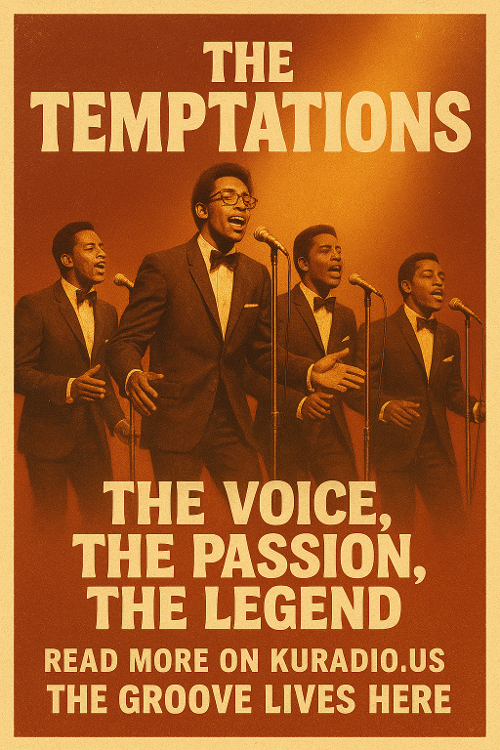
ElevenLabs_2025-11-18T17_10_37_Gary Pratz_ivc_sp104_s21_sb64_v3.mp3
The Temptations: Masters of Soul and Harmony By K U Radio – The Groove Lives Here.
Part of KU Radio’s “Songs That Shaped a Generation” Series.
When you hear those first few harmonies glide across the airwaves, you know it can only be one group — The Temptations. From sharp suits and slick choreography to flawless vocal layers that defined a generation, the Temptations didn’t just sing soul — they shaped it.
Formed in Detroit in the early 1960s, the Temptations were one of Motown’s crown jewels. With lineup shifts that spanned decades, their sound evolved from smooth doo-wop to psychedelic soul and beyond. But no matter the era, one thing remained constant: that unmistakable mix of class, charisma, and vocal precision.
Their early hits — “My Girl,” “The Way You Do the Things You Do,” and “Ain’t Too Proud to Beg” — captured Motown’s golden glow. David Ruffin’s tender, soulful delivery on “My Girl” remains one of the most recognizable performances in music history. But as the decade turned, so did the group’s sound.
Under producer Norman Whitfield, The Temptations ventured into deeper, more experimental grooves with songs like “Cloud Nine” and “Papa Was a Rollin’ Stone.” Suddenly, the group wasn’t just about romance — they were capturing the tension, rhythm, and reality of a changing America. And that’s what made The Temptations truly timeless.
They were more than a harmony group; they were a reflection of every mood, every era — from love and joy to struggle and pride. Whether it was Ruffin’s raw soul, Eddie Kendricks’ silky falsetto, or Otis Williams’ steady leadership, the blend was pure magic. Even today, their influence is everywhere — sampled, covered, and celebrated by artists across genres. Their sound is Motown’s heartbeat, their moves are music’s blueprint, and their legacy? Untouchable.
So when you hear those smooth harmonies floating through your speakers, don’t just listen — feel it. That’s The Temptations, reminding us why great music never fades. 🎶 Turn it up, keep it soulful, and remember… The Groove Lives Here – K U Radio.
ElevenLabs_2025-12-04T18_22_59_Gary Pratz_ivc_sp104_s21_sb64_v3.mp3
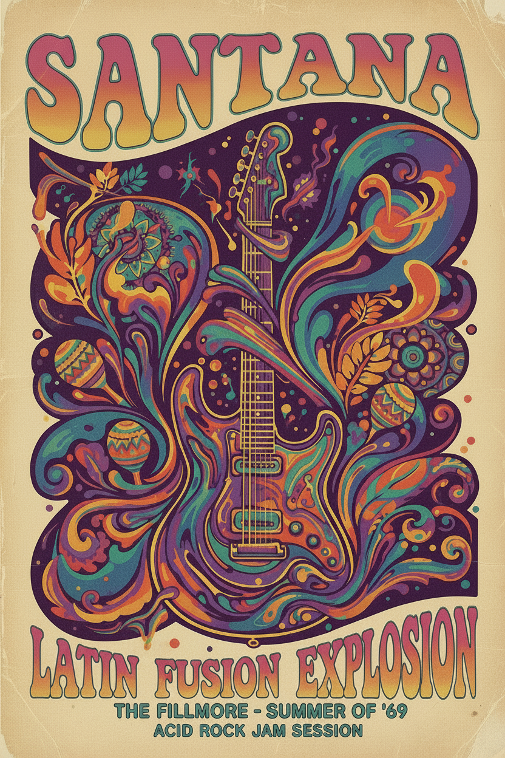
🎸 Santana: The Sound That Set the World on Fire
K U Radio — The Groove Lives Here
When you think of music that moves through your soul, bends genres, and hits you right in the heartbeat, one name stands tall: Santana.
For more than five decades, Carlos Santana has fused rock, blues, Latin rhythms, and pure spiritual energy into a sound unlike anything else in music history.
🔥 The Breakthrough That Changed Everything
It was 1969 at Woodstock when the world first felt Santana’s fire.
Most of the crowd had never heard of the band — but when “Soul Sacrifice” exploded from the stage, the entire festival stopped.
That blend of congas, timbales, screaming guitar, and raw rhythm wasn’t just music…
It was a cultural awakening.
Suddenly, Santana wasn’t just a band — they were a movement.
🎶 The Hits That Still Live in Our Bones
From the radio-shaking power of “Black Magic Woman” and “Oye Como Va”,
to the silky smooth revival of “Smooth” with Rob Thomas,
Santana continues to blur the lines between eras, cultures, and genres.
Every song carries that unmistakable Santana signature —
a wailing guitar that feels like it’s telling your life story.
🌎 A Legacy Bigger Than the Charts
Santana’s music has always carried a spiritual edge.
Carlos himself often says he plays from a place of light —
a place where music becomes a universal language.
And decades later, that message is still flowing strong.
With over 100 million records sold,
10 Grammy Awards,
and a permanent place in the Rock & Roll Hall of Fame,
Santana remains one of the most influential and visionary artists in modern music.
🎧 Hear the Magic on K U Radio
As long as that iconic guitar keeps singing, Santana will live forever.
And here on K U Radio — The Groove Lives Here, we celebrate the classics that shaped generations.
So turn it up…
Feel the rhythm…
And let Santana remind you what real soul sounds like.